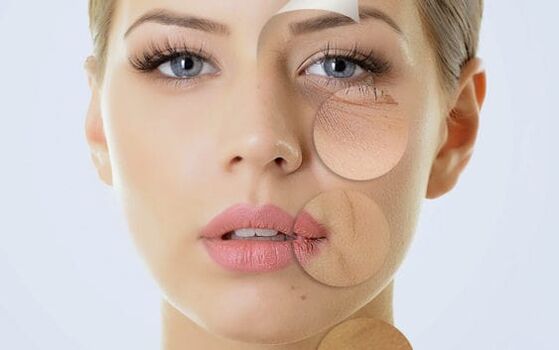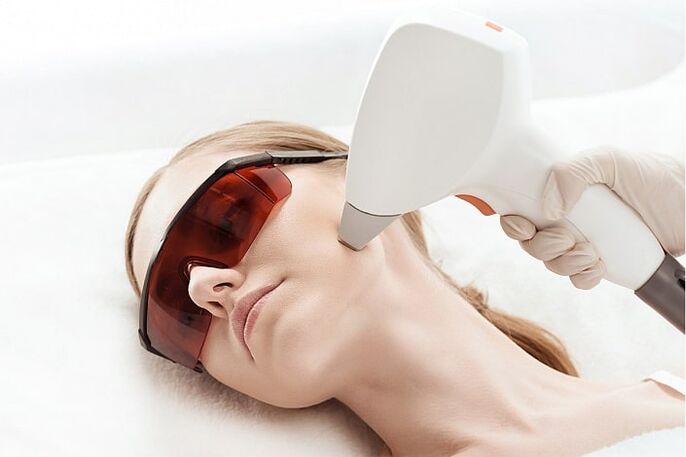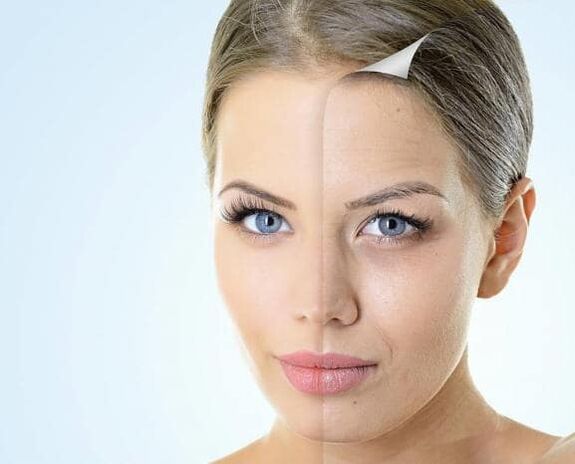
Every woman dreams of prolonging youth and preserving beauty for years to come. And when fairy tales use "rejuvenating apples", "tears of fantastic animals", conspiracies and spells for these beautiful heroines, fractional CO2 rejuvenation is an effective way to get rid of wrinkles in real life.
This procedure has become an alternative to the aggressive methods previously used in cosmetology. Fractional laser resurfacing also offers a depth effect, but skin recovery after the lift is much faster. Reviews from practicing dermatologists confirm that you can get much better results using this method.
Interesting fact:The difference between fractional facial skin rejuvenation and traditional laser resurfacing is the principle of action. In the classic procedure, the skin is completely irradiated. In the case of fractional rejuvenation, micro-rays penetrate selectively. This creates adjacent damaged and undamaged areas on the skin area. This allows for faster recovery and shortens the time to full recovery.
So, fractional laser rejuvenation is a hardware dermatological manipulation that aims to remove wrinkles, get rid of stretch marks, scars, and scars. Facial resurfacing with a fractional laser also allows you to rid the patient of age spots and scars after acne. The best reward for a dermatologist to see the result of their work is lightened skin without age spots, wrinkles and large pores. And patients who see such a result recommend rejuvenation with a fractional laser to friends and family.
Interesting fact:The procedure is called an ambulance for people facing age-related skin changes. It is suitable for both men and women of all ages. It can be performed on any part of the body: the face, neck, arms. At the first signs of sagging, with the appearance of wrinkles on the surface of the skin, you can make an appointment with a dermatologist. The technology is safe and effective, as tests and research show.
Although laser procedures have no age limit, they are recommended to be used until the skin has lost its regenerative capabilities for good. The first sessions can be done at the age of 30-35 years. This is how your skin stays healthy.
What is Fractional Taper?
Fractional CO2 laser rejuvenation is carried out with a special device - CO2 laser and a special attachment for fractional surface renewal. The fractionated CO2 laser is a new generation device. The beam of light passes through a grid that divides it into thousands of microscopic streams. They in turn perforate the skin and act locally without affecting neighboring areas of the skin. A targeted effect on the deep layers of the skin stimulates the production of substances such as collagen and elastin by the cells of the dermis. Due to their active release, the epidermis is quickly renewed.
Interesting information:Laser facial rejuvenation as a medical procedure was patented in 2004. This was preceded by months of clinical research. Today the procedure is only carried out on the basis of specialized cosmetic and medical clinics that have high-tech lasers in their arsenal.

Micro rays that go through the layers of the dermis are very thin. They instantly destroy old elastin and collagen fibers and provoke the regeneration of new tissue without defects. After a few days, the results of the procedure will be visible. When comparing the exposure sites before and after exposure, significant improvements are found. You can see photos of people who have already used this rejuvenation technique. The changes are visible to the naked eye.
Important:After just one session, the skin in the affected area is tightened, gaining firmness and elasticity. The skin tone returns. Wrinkles are reduced, scars and stretch marks become less visible. And what is important, the skin renews itself over several months.
In fact, the manipulation allows you to get the effect of a 3D 4D taper. The combined result looks like this:
- Deep skin tightening is observed.
- Rejuvenating effect down to the deepest layers.
- Removal of fine wrinkles and correction of deep wrinkles.
- Alignment of the color and texture of the dermis.
In order to ensure a lasting positive effect, a course of 2-3 procedures is recommended. In this case, the interval between the dermatologist appointments is 6 months on average. An individual therapy plan is created by a dermatologist taking into account the initial condition of the skin and the desired effect with the patient.
Some useful information:The result of fractional tapering depends on the qualifications and experience of the doctor. Finally, a specialist needs to calculate the optimal intensity of exercise and the number of sessions required for a given patient. The efficiency of the procedures is also influenced by the medical laser class. The smaller the diameter of the device's microthermal zone, the more accurate the impact and the shorter the rehabilitation time.
How does the fractional rejuvenation process work and what are the benefits?
Laser facial rejuvenation begins with a consultation with a dermatologist. After visual and instrumental assessment of the patient's skin condition, the doctor individually selects the depth and intensity of the fractionated laser. It will be different in different areas of the skin. Renewing the skin under or around the eyes is gentler than exfoliating the skin from the cleavage, abdomen and buttocks.
Fractional laser skin rejuvenation does not require any prior preparation. Thorough cleaning of the skin is already carried out in the practice of a specialist. Laser skin rejuvenation is always carried out with a special cream - anesthesia. This helps reduce discomfort and discomfort.
Important:Laser Fractional Skin Resurfacing gives a strong impetus for tissue renewal, modeling of the renewed epidermis through active cell division and the formation of new skin fibers.

In some cases, side effects such as mild edema that disappears within 3 days, darkening of the skin at the exposure site can be observed. It will also "come down" quickly.
Indications and contraindications for use
Laser-fractionated skin resurfacing is effective for the following diseases and manifestations:
- superficial and deep wrinkles (age, expression);
- Stretch marks, scars, scars;
- Age spots, vascular defects;
- enlarged pores, the effects of acne;
- dull skin color, loose texture.
These manifestations are direct indications for the procedure. But it also has contraindications. Laser Fractional Facial Rejuvenation is not performed:
- during pregnancy;
- with confirmed oncological diagnosis of epilepsy;
- in acute infectious diseases;
- with diabetes and heart disease;
- with psoriasis in the acute stage.
After chemical peeling, hardware cleaning, and a number of other cosmetic procedures on the same affected area, at least 2 weeks should pass.
Skin care after laser resurfacing
Fractional laser skin care is very easy. All recommendations are given by a dermatologist. They boil down to active moistening of the affected area with regenerating and moisturizing ingredients.
Some useful information:Persistent redness appears on the skin for the first few days after the session. Then a crust appears on the skin. After 2-3 days, it begins to move away. Young skin remains in its place.
To make skin restoration easier and faster after laser resurfacing, you need to maintain it regularly. For the first three days, apply an anti-inflammatory cream to the skin three times a day. Next, it is replaced with a moisturizer. It is contraindicated to be in direct sunlight, sunbathe, visit a solarium for a month after the procedure.
Despite the fact that the price of fractional laser rejuvenation is higher than the cost of many other types of cosmetic procedures, it is chosen by those who really want to get a guaranteed positive result. 3D-4D Laser Fractional Face Resurfacing works wonders.
The advantages of a professional clinic are:
- modern technical equipment of the clinic;
- highly qualified staff with professional experience;
- individual programs for customers;
- objective prices for all services;
- Guarantees and loyalty program for regular guests.
You can now make an appointment with a professional dermatologist to learn more about rejuvenation procedures.





































































